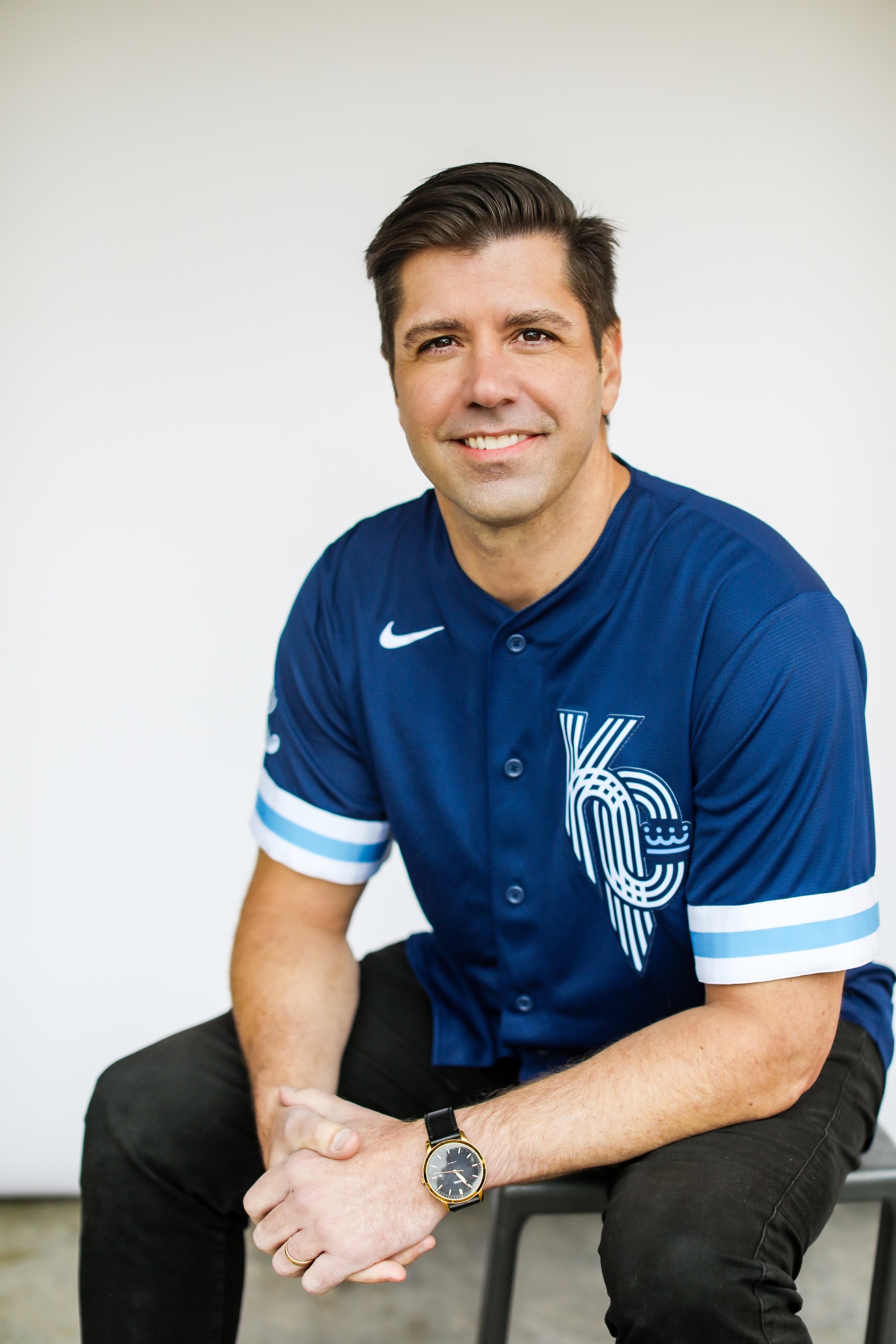All Library locations will be closed Wednesday, December 24 and Thursday, December 25, for Christmas.
This story first aired on KCUR 89.3 on March 22, 2024. Click here to listen.
Matt Stewart says that when he was 12, his love of the Kansas City Royals was “on the edge of obsessive.” Growing up in Omaha, Nebraska, the Emmy-award winning Fox4 reporter listened to Denny Matthews call every game and followed the box scores.
His new book, The Kansas City Royals: An Illustrated Timeline, draws on that obsessive love and allowed Stewart to “dig in and find some obscure stories and then confirm them. What gives this book personality are those stories,” he says.
Five years before Kansas City had its name, it had professional baseball. From that point in 1884, the book is a romp through time, owners, players, financial strains, losses and wins, all with a heavy emphasis on the lesser-known history.
The Royals Baseball Academy
Eighty-four years into its relationship with baseball, Kansas City found itself without a professional team for nearly a year after owner Charlie Finley moved the A’s to Oakland.

In 1968, Stewart says, Sen. Stuart Symington of Missouri threatened to sue Major League Baseball over the slight.
“Major League Baseball said, ‘OK, we will give you a team right away,’” he says.
That team would need an owner, and Kansas City entrepreneur Ewing Marion Kauffman was at the top of the list of potential buyers.
“Ewing Kauffman knew really little about baseball. Hadn't played it, didn't follow it. But his wife knew that this city needed a Major League Baseball team; we'd be better for it,” Stewart says. “So, she convinced her husband to spend $6 million on this baseball franchise.”
However, Kauffman didn’t know how to build a team.
“He actually reached out to the owners of the other teams and said, ‘Hey, can I buy your best players?’” Stewart explains. “And of course, the owners are like, ‘No, they're my players, you're not taking them.’”
But Kauffman had an ambition to train passed-over ball players and other types of athletes like pole vaulters and wrestlers into the players he wanted and invested millions more dollars in a Florida-based program he called the Royals Baseball Academy.
“He brought a bunch of high-tech, new age training methods,” Stewart says. “Back then, baseball players didn't take batting practice every day. They didn't really practice like they do today.”
According to Stewart, “it didn't go over very well.”
By the time the academy closed, only one player had made it to the Major Leagues: then-second baseman Frank White Jr., who is now Jackson County Executive (and at odds with his former team over whether to extend a county sales tax to build a new downtown ballpark).
The Royals Water Spectacular — and a near miss
Stewart writes that the massive waterworks display at Kauffman Stadium was also originally suggested by Muriel Kauffman. She and Ewing hired Anthony C. Mifsud to draw up a plan.
Misfud had a water display design for the 1964 World’s Fair and estimated the cost of a custom Royals fountain at $250,000. But the Kauffmans wanted something grander and, as the cost rose, they said they’d foot the bill themselves rather than putting the burden on taxpayers.
Ultimately, the design included a half-million gallon, 322-foot display with a 10-foot waterfall and a system of jets that shot water 70 feet into the air. It cost $1.5 million.
Maybe the genesis of the iconic fountains isn’t exactly lost to history, but have you heard the story about the two players who took a swim and narrowly missed electrocution?
Hall of Fame shortstop Freddie Patek and second baseman Cookie Rojas were on the team that won the Royals’ first AL West crown in 1976. They celebrated with teammates all that night and into the next morning.
That following day, Stewart writes, they jumped into the fountains fully uniformed.

If Royals PR Director Dean Vogelaar hadn’t anticipated the move and gotten “the electricity in the fountains turned off, we could’ve been swimming out there like a couple of dead goldfish,” Stewart quotes Patek as saying.
Pitching, then bartending at the Hyatt
Between starting out with an owner who didn’t know about baseball and a later owner who desperately wanted to save money, the team’s finances were bleak, and team members were far from millionaires.
“Players were starting to become more popular, and they were starting to command higher salaries,” Stewart says. “But the union was really in its infancy, so they didn't have a whole lot of power with the owners.”
In 1981, Stewart says, the Royals were the only losing Major League team to make the play-offs. But that year also saw a players’ strike, when the players had no income at all.
Starting pitcher Rich Gale found a part-time job tending bar at the Hyatt, and took a shift on July 17 of that year.
“He happened to be at the Hyatt when the skywalks collapsed and killed all those people, and he ran out from behind the bar and helped rescue several people from that,” Stewart says.
Stewart says news outlets probably covered that part of the story at the time, but now it’s largely forgotten.
“That's the thing I love about this book, is that ability to tell these stories that have been forgotten over time,” Stewart says. “And now they're in print, and people can remember them or learn them for the first time.”
The Kansas City Royals: An Illustrated Timeline, with Matt Stewart and Frank White, is at 6 p.m. on Monday, April 1 at the Kansas City Public Library’s Central Location, 14 W. 10th St., Kansas City, Missouri 64105. The event is free with RSVP.
This story was produced in partnership with the KCUR 89.3 NPR in Kansas City.